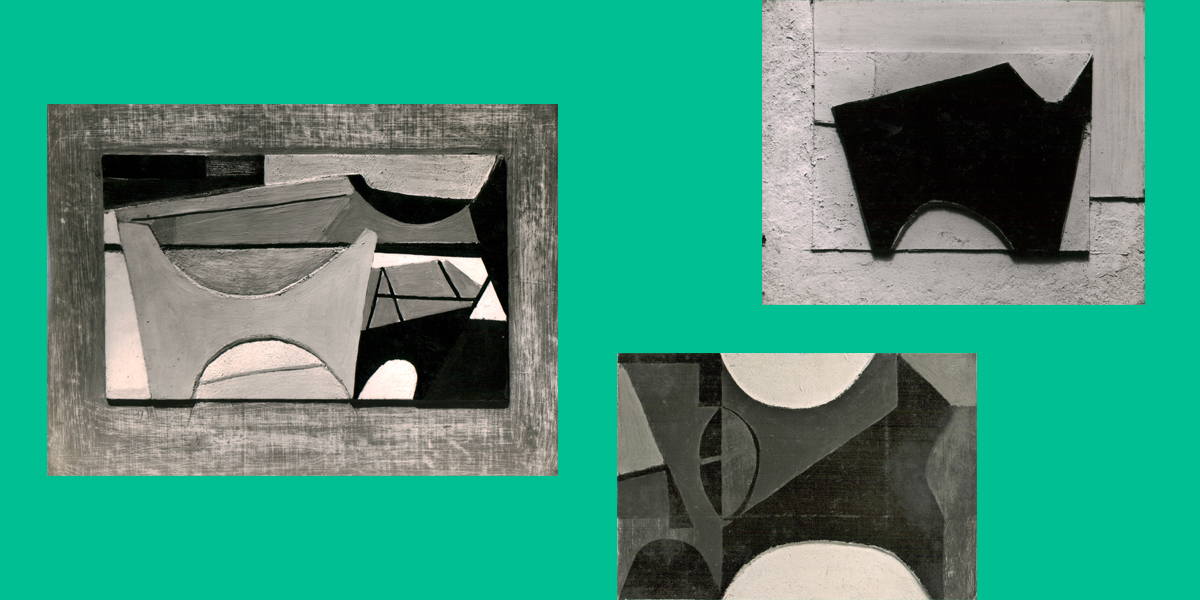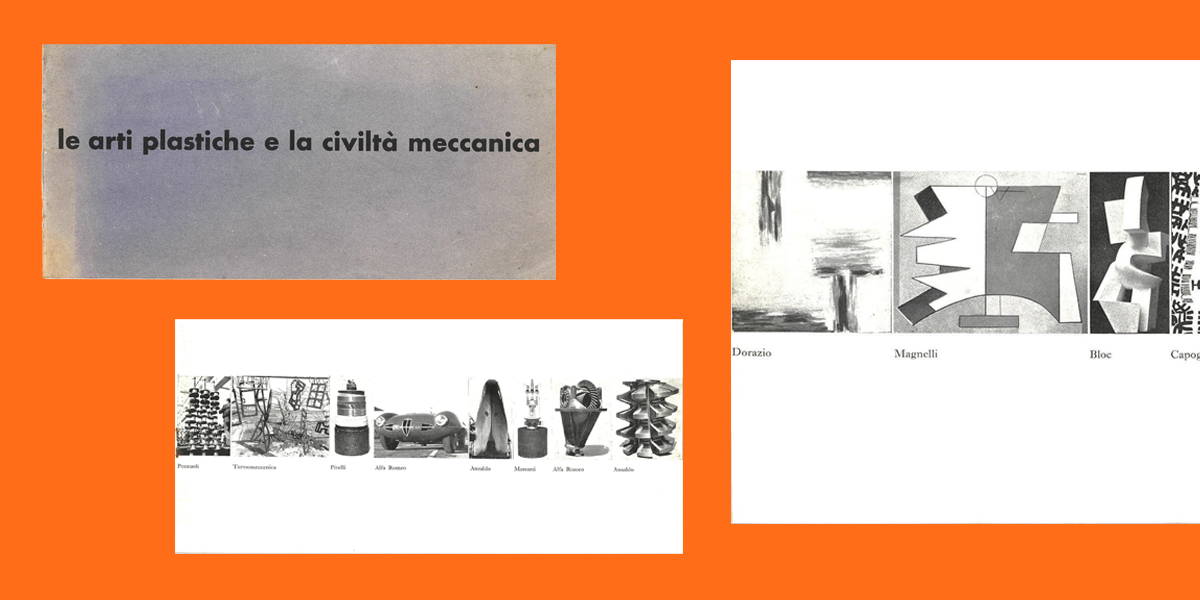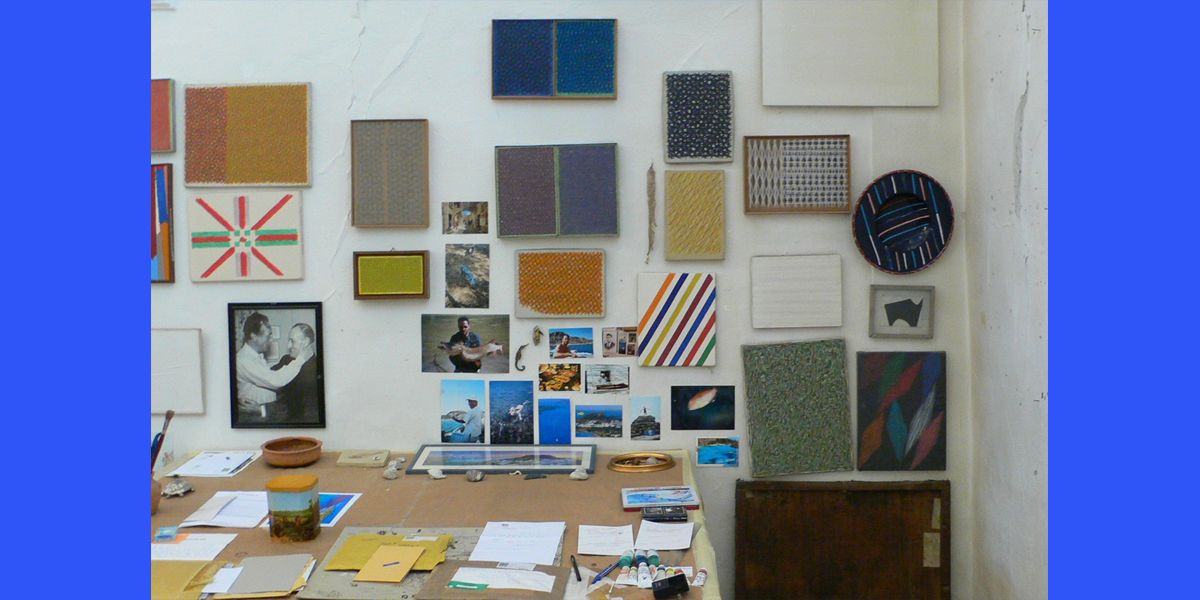Researching Reliefs in Rome
Thanks to the diligent work undertaken by our current placement student, Italia Gorski, from the University of St Andrews Museum and Heritage Studies master’s programme, a new piece of Barns-Graham’s exhibition history has been uncovered.
Using archive materials including a diary, correspondence, photographs and exhibition ephemera, and drawings made by Barns-Graham, Italia has been piecing together the steps taken by Barns-Graham while she made trips around Italy in 1954 and 1955. Along with gaining a greater understanding of the artworks that Barns-Graham was particularly inspired by, and the people that she met, Italia has discovered that Barns-Graham was involved in an exhibition at the Galleria Nazionale d’Arte Moderna in Rome. This is particularly exciting for us as it lists the three small reliefs shown: Black Form on White, 1954, Levant, 1955 and White Arches, 1954. We know from various sources that Barns-Graham had taken a group of small reliefs to Italy in the hope that she might sell them, but until very recently, we had little idea which works were taken, if she exhibited them or where they might have ended up.

Clockwise: Levant, 1995; Black Form on White, 1954; White Arches, 1954
Le arti plastiche e la civiltà meccanica
The exhibition, Le arti plastiche e la civiltà meccanica. 92a Mostra annuale dell’Art club was organised by Art Club, an independent international artist association with a particular focus on Futurism, with honorary members including Picasso and De Chirico. This, the 92nd exhibition of the Art Club, was curated by a committee of seven, including the president of the Art Club, Enrico Prampolini, and the director of the Galleria Nazionale d’Arte Moderna, Dr Palma Bucarelli. It attempted to challenge the viewer by placing machines, engines, and cars in a gallery alongside abstract painting and sculpture.
Barns-Graham was one of 46 artists represented in the exhibition, and the only representative of the UK. Although the majority of artists exhibited were Italian, one work by French/German artist Jean (Hans) Arp was also shown, a relief entitled Conchiglia – nuvola. This would have been particularly significant for Barns-Graham as she had recently visited Arp in his studio in Paris. In later interviews recorded in the 1990s, she credited Arp as having been one of her biggest inspirations.
View the exhibition catalogue

The exhibition catalogue for Le arti plastiche e la civiltà meccanica
Three Reliefs and Piero Dorazio
A year ago, the Trust was contacted by the son of artist, Piero Dorazio, to enquire about three possible works by Barns-Graham in his parents’ collections. The images supplied seemed a good match to some of the photographic art records we have from the 1950s, however, without physical examination or any evidence of how they may have passed from Barns-Graham to Dorazio and his wife, we were unable to conclude if they were the same works as recorded.

Piero Dorazio's studio with Black Form on White, 1954 on right hand side. Image courtesy of Justin Dorazio
The discovery of the catalogue has also shed some new light on the works in the Dorazios’ collections. The three reliefs shown by Barns-Graham in Le arti plastiche e la civiltà meccanica match the titles of those identified in the photographic art records. Piero Dorazio both exhibited in the show and was on the curatorial committee, which is likely how he came to acquire the works. One of the works, Black Form on White, 1945, was hanging on the wall of Piero Dorazio’s studio in Italy on his passing in 2005. Probably because Barns-Graham was in the midst of traveling, there was scant record of what happened to the works that she took to Italy. In fact, we only had one consignment note from the Galleriea Schneider, a gallery focussed on representing young, experimental artists, and based near to the Spanish Steps in Rome. Even that gave very little information, vaguely listing “six reliefs”.
Thanks to the research of both Italia in St Andrews and Justin Dorazio in New York, we have been able to piece together an exciting international moment in Barns-Graham’s artistic career.
